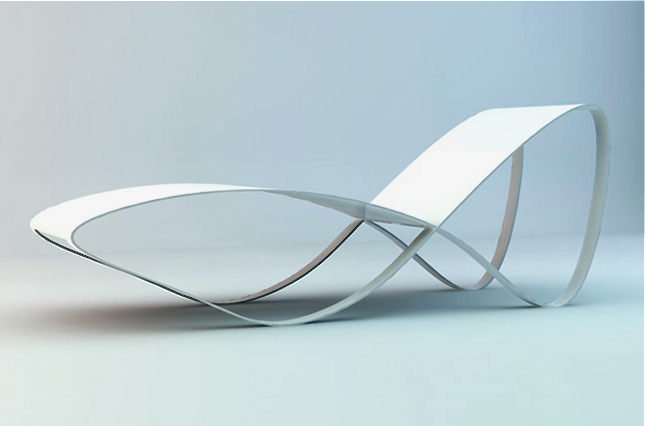

Title: Outdoor Indoor Chair Furniture By Sculptor Veronica Martinez
Shipping: $29.00
Artist: N/A
Period: Contemporary
History: N/A
Origin: N/A
Condition: Excellent
Item Date: New
Item ID: 6519
{Price Upon request} Status: Exclusive / Consignment. We Are Art Advisers. Nature and the environment spontaneously inhabit design. Like in designer Veronica Martìnez’s chairs, inspired by the spiral movement of hurricanes or the double helix of a strand of DNA. Having graduated in Interior Design and Fine Arts in Barcellona, Veronica opened her studio in Madrid in 2010 and has since given way to the Enessentia project, a new business and consultancy model for interior and exterior design. The philosophy behind Enessentia is to design common objects with a soul, starting from simple and pure shapes inspired by the geometry of nature. Each piece is fluid and flexible, designed in acrylic. According to Veronica Martìnez, designing is not just about creating a product, but about redesigning one that already exists and making it better by reducing its environmental impact and keeping the human and social factor in mind. In this historic moment Enessentia wants to be part of a movement that places art and man at the center of society. To do this the focus has to shift from mass production towards quality, the tradition of working by hand and the search for sustainability. A design to change the world. *All of the art is edited and chosen by us for its high quality and workmanship before posting. These collectibles have been selected with the artist & collector in mind. * We specialize in high end luxury fine art and collectibles from private estates. - Our job is to find and target great art by collecting a vast array of contemporary, vintage, antique and collectible items from across the globe. Individually handcrafted, we breathe new life into these forgotten relics by giving back each piece it's unique story. We welcome dealers, galleries, and private collectors to register securely and buy with us.
http://en.wikipedia.org/wiki/Chair
A chair is a piece of furniture with a raised surface used to sit on, commonly for use by one person. Chairs are most often supported by four legs and have a back; however, a chair can have three legs or could have a different shape. A chair without a back or arm rests is a stool, or when raised up, a bar stool. A chair with arms is an armchair and with folding action and reclining footrest, a recliner. A permanently fixed chair in a train or theater is a seat or, in an airplane, airline seat; when riding, it is a saddle and bicycle saddle, and for an automobile, a car seat or infant car seat. With wheels it is a wheelchair and when hung from above, a swing. A chair for more than one person is a couch, sofa, settee, or "loveseat"; or a bench. A separate footrest for a chair is known as an ottoman, hassock or pouffe. The chair is known for its antiquity and simplicity, although for many centuries it was an article of state and dignity rather than an article of ordinary use. "The chair" is still extensively used as the emblem of authority in the House of Commons in the United Kingdom and Canada, and in many other settings. Committees, boards of directors, and academic departments all have a 'chairman'. Endowed professorships are referred to as chairs. In fact, it was not until the 16th century that it became common anywhere. Until then the chest, the bench and the stool were the ordinary seats of everyday life, and the number of chairs which have survived from an earlier date is exceedingly limited; most examples are of ecclesiastical or seigneurial origin. Our knowledge of the chairs of remote antiquity is derived almost entirely from monuments, sculpture and paintings. Chairs were in existence since at least the Early Dynastic Period of Egypt. They were covered with cloth or leather, were made of carved wood and were much lower than today’s chairs, chair seats were sometimes only 25 cm high. In ancient Egypt chairs appear to have been of great richness and splendor. Fashioned of ebony and ivory, or of carved and gilded wood, they were covered with costly materials, magnificent patterns and supported upon representations of the legs of beasts or the figures of captives. Generally speaking, the higher ranked an individual was, the taller and more sumptuous was the chair he sat on and the greater the honor. On state occasions the pharaoh sat on a throne, often with a little footstool in front of it.